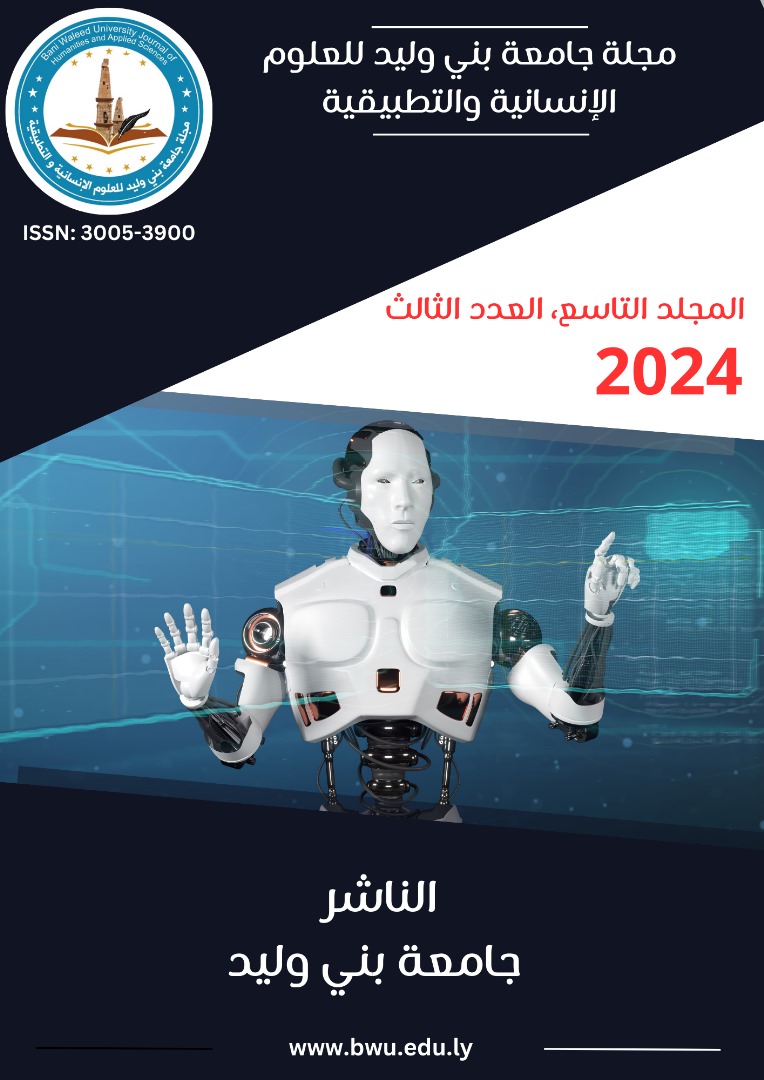Reducing Concrete's Permeability through the use of Crystal-X as an additive mixture
DOI:
https://doi.org/10.58916/jhas.v9i3.423الكلمات المفتاحية:
Crystal-X, Concrete Permeability, Cement, Additive Mixtureالملخص
The permeability of concrete refers to its capacity to allow the passage of water and moisture. Permeability plays a crucial role in various aspects, including preserving the longevity and visual appeal of structures, as well as minimizing issues related to leakage and deterioration. Several methods have been devised to enhance the permeability of concrete, and one such method involves incorporating chemical crystals called Crystal-X. These materials improve the concrete's hydrophobic properties, reducing the likelihood of water leakage. Crystal-X possesses the capacity to absorb water that is found within the pores of the concrete and transform it into crystals that are not soluble. When the pores become saturated with these crystals, they create a barrier that prevents water and moisture from entering. The outcomes of multiple laboratory tests performed on both fresh and hardened concrete were elucidated and clarified subsequent to the incorporation of Crystal-X as an additive, at dosages ranging from 0.9% to 1.3% of the weight of the cement. The concrete's workability was assessed through a slump test, while its hardened state was evaluated through tests measuring compressive strength, permeability, and absorption rate. After a curing period of 28 days, the addition of Crystal-X at a rate of 1.3 % by weight of cement resulted in a 15.93% increase in the compressive strength of the concrete. Similarly, the permeability of the concrete decreased by 11.9% when Crystal-X was added at the same rate.
التنزيلات
المراجع
Al-Jabri, K. S., Al-Saidy, A. H., Taha, R., & Al-Kemyani, A. J. (2011). Effect of using wastewater on the properties of high strength concrete. Procedia Engineering, 14, 370-376.
https://doi.org/10.1016/j.proeng.2011.07.046
Al-Rashed, R., & Jabari, M. (2020). Dual-crystallization waterproofing technology for topical treatment of concrete. Case Studies in Construction Materials, 13, e00408.
https://doi.org/10.1016/j.cscm.2020.e00408
Aslani, F., Zhang, Y., Manning, D., Valdez, L. C., & Manning, N. (2022). Additive and alternative materials to cement for well plugging and abandonment: A state-of-the-art review. Journal of Petroleum Science and Engineering, 215, 110728. https://doi.org/10.1016/j.petrol.2022.110728
Azarsa, P., Gupta, R., & Biparva, A. (2019). Assessment of self-healing and durability parameters of concretes incorporating crystalline admixtures and Portland Limestone Cement. Cement and Concrete Composites, 99, 17-31. https://doi.org/10.1016/j.cemconcomp.2019.02.017
de Souza Oliveira, A., Gomes, O. D. F. M., Ferrara, L., Fairbairn, E. D. M. R., & Toledo Filho, R. D. (2021). An overview of a twofold effect of crystalline admixtures in cement-based materials: from permeability-reducers to self-healing stimulators. Journal of Building Engineering, 41, 102400.
https://doi.org/10.1016/j.jobe.2021.102400
Gokulanathan, V., Arun, K., & Priyadharshini, P. (2021). Fresh and hardened properties of five non-potable water mixed and cured concrete: A comprehensive review. Construction and Building Materials, 309, 125089. https://doi.org/10.1016/j.conbuildmat.2021.125089
Huseien, G. F., Shah, K. W., & Sam, A. R. M. (2019). Sustainability of nanomaterials based self-healing concrete: An all-inclusive insight. Journal of Building Engineering, 23, 155-171.
https://doi.org/10.1016/j.jobe.2019.01.032
Jahandari, S., Tao, Z., Alim, M. A., & Li, W. (2023). Integral waterproof concrete: A comprehensive review. Journal of Building Engineering, 107718. https://doi.org/10.1016/j.jobe.2023.107718
Liang, C., Li, B., Guo, M. Z., Hou, S., Wang, S., Gao, Y., & Wang, X. (2024). Effects of early-age carbonation curing on the properties of cement-based materials: A review. Journal of Building Engineering, 108495. https://doi.org/10.1016/j.jobe.2024.108495
Lohtia, R. P., & Joshi, R. C. (1996). Mineral admixtures. In Concrete admixtures handbook (pp. 657-739). William Andrew Publishing. https://doi.org/10.1016/B978-081551373-5.50014-3
Mangi, S. A., Makhija, A., Raza, M. S., Khahro, S. H., & Jhatial, A. A. (2021). A comprehensive review on effects of seawater on engineering properties of concrete. Silicon, 1-8.
https://doi.org/10.1007/s12633-020-00724-7
Nair, P. S., Gupta, R., & Agrawal, V. (2022). Self-healing concrete: a promising innovation for sustainability-a review. Materials Today: Proceedings, 65, 1410-1417.
https://doi.org/10.1016/j.matpr.2022.04.393
Nasim, M., Dewangan, U. K., & Deo, S. V. (2020). Autonomous healing in concrete by crystalline admixture: A review. Materials Today: Proceedings, 32, 638-644.
https://doi.org/10.1016/j.matpr.2020.03.116
Nikookar, M., Brake, N. A., Adesina, M., Rahman, A., & Selvaratnam, T. (2023). Past, current, and future re-use of recycled non-potable water sources in concrete applications to reduce freshwater consumption-A Review. Cleaner Materials, 100203. https://doi.org/10.1016/j.clema.2023.100203
Ravitheja, A., Reddy, T. C. S., & Sashidhar, C. (2019). Self-healing concrete with crystalline admixture-a review. Journal of Wuhan University of Technology-Mater. Sci. Ed., 34, 1143-1154.
https://doi.org/10.1007/s11595-019-2171-2
Tibbetts, C. M., Riding, K. A., & Ferraro, C. C. (2021). A critical review of the testing and benefits of permeability-reducing admixtures for use in concrete. Cement, 6, 100016.
https://doi.org/10.1016/j.cement.2021.100016
Wang, Q., Zhou, X., Sun, X., Aslam, R., Wang, R., Sun, Y., ... & Li, X. (2024). Corrosion of Reinforcement in Reinforced Concrete: Influencing Factors, Detection Methods, and Control Techniques-A Review. Journal of Testing and Evaluation, 52(5), 3096-3122. https://doi.org/10.1520/JTE20230752
Zhang, D., Ghouleh, Z., & Shao, Y. (2017). Review on carbonation curing of cement-based materials. Journal of CO2 Utilization, 21, 119-131. https://doi.org/10.1016/j.jcou.2017.07.003
Zhao, Y., Hu, X., Shi, C., Zhang, Z., & Zhu, D. (2021). A review on seawater sea-sand concrete: Mixture proportion, hydration, microstructure and properties. Construction and Building Materials, 295, 123602. https://doi.org/10.1016/j.conbuildmat.2021.123602













